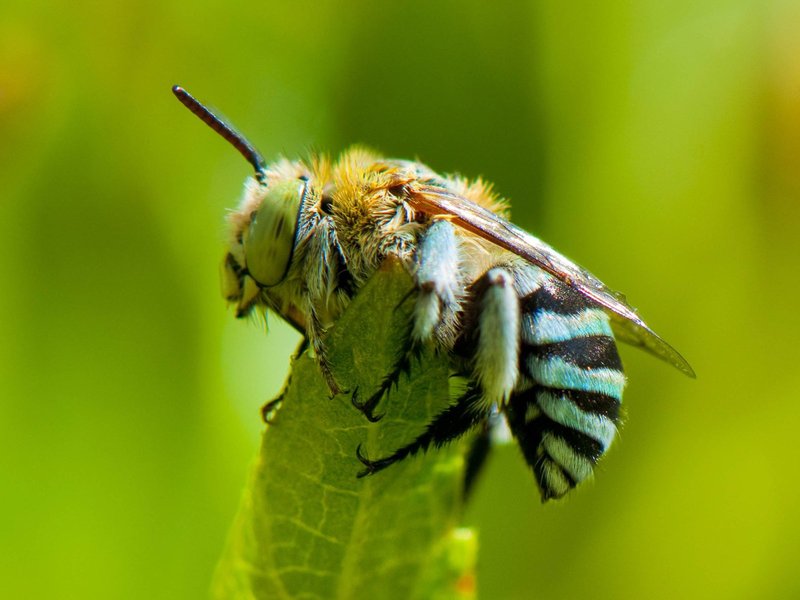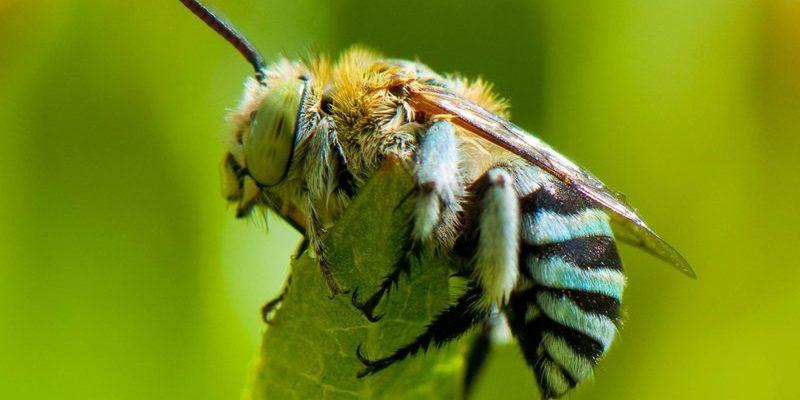
Blue banded bees are not your typical honey-producing bees. They belong to a group of solitary bees and are known for their striking blue stripes. Keeping them can bring a whole new level of beauty and functionality to your backyard. But before diving in headfirst, there are a few things to consider. Let’s take a closer look at whether you can keep blue banded bees, what it entails, and how to make it happen.
What Are Blue Banded Bees?
Blue banded bees, scientifically known as *Amegilla* species, are solitary bees native to Australia and parts of Southeast Asia. Unlike honeybees, which live in colonies, blue banded bees operate alone. They are particularly recognized for their distinct blue bands across their bodies and their unique method of pollination called “buzz pollination.”
You might be surprised to learn that buzz pollination is a fascinating process. These bees vibrate their bodies while clinging to a flower, shaking loose pollen that would otherwise stay stuck. This technique is especially crucial for plants like tomatoes and blueberries, which depend on it for effective pollination. If you’re hoping to boost your garden’s yield, these bees can be a game-changer.
One of the charming aspects of blue banded bees is their preferences for certain flowers. They often favor native plants that provide nectar and pollen. By attracting them to your garden, you’re not only helping your local environment but also creating a beautiful space filled with life.
Can You Keep Blue Banded Bees at Home?
The short answer is yes, you can keep blue banded bees at home! However, it’s not as simple as setting up a traditional beehive. Since these bees are solitary, they don’t require a hive in the same way honeybees do. Instead, you’ll need to create an inviting habitat where they can thrive.
To get started, think about creating a bee-friendly garden. Planting a variety of native flowers will attract blue banded bees and provide them with the nectar and pollen they need. It’s important to choose plants that bloom at different times throughout the year, ensuring a continuous food source. The more diversity you have, the better chance you’ll have at attracting these lovely creatures.
Another key to keeping blue banded bees is providing suitable nesting sites. They often prefer ground nests in well-drained sand or soil. You can create a small patch of bare ground or even build a bee hotel—think of it as a boutique hotel for bees! By offering a cozy spot, you’ll encourage them to settle down and get comfortable in your garden.
Understanding Their Life Cycle
To successfully keep blue banded bees, it helps to understand their life cycle. Blue banded bees typically emerge in spring, just as flowers begin to bloom. Female bees are responsible for building their nests and gathering food, while males usually spend their time searching for mates.
The female bee will lay her eggs in a small burrow and provide a food supply of pollen for the larvae. Once the eggs hatch, the young bees will consume the stored pollen before emerging as adults. It’s fascinating to note that adult blue banded bees have a lifespan of about 4 to 8 weeks. During this brief period, they work tirelessly to pollinate plants and reproduce.
Understanding this life cycle can help you tailor your garden throughout the year. For example, planting flowers that bloom in spring will provide food when the bees first emerge, increasing the odds they’ll stick around.
Common Challenges in Keeping Blue Banded Bees
While keeping blue banded bees can be rewarding, there are challenges to consider. One major concern is habitat loss due to urbanization and pesticide use. These factors can diminish their natural habitats, making it harder for them to find food and nesting sites.
Additionally, blue banded bees can be somewhat picky about their habitat. They prefer sandy soils and open spaces, so if you live in an area with heavy clay or too many structures, it might be a challenge to attract them.
Lastly, understanding the seasonal patterns is essential. Unlike honeybees, which are active year-round, blue banded bees are more seasonal. This means you need to be patient and understand that they may not always be around. Creating a suitable environment can help mitigate some challenges, but it may not guarantee their presence.
Benefits of Keeping Blue Banded Bees
You might be wondering why you should consider keeping blue banded bees at all. For starters, they are exceptional pollinators that play a crucial role in the ecosystem. By introducing them to your garden, you’re helping enhance plant growth and contribute to local biodiversity.
Moreover, watching these beautiful bees in action can be incredibly rewarding. Their striking appearance and unique behaviors can add a fascinating element to your gardening experience. It’s like having tiny, colorful pets that work tirelessly to support your plants.
Lastly, keeping blue banded bees can promote environmental awareness. By learning about their habits and needs, you can become more mindful of gardening practices and how they affect local wildlife. It’s a wonderful way to connect with nature and foster a deeper appreciation for the ecosystem around you.
How to Attract Blue Banded Bees to Your Garden
Attracting blue banded bees to your garden isn’t as hard as you might think. Here’s a simple blueprint to get you started:
- Choose Native Plants: Focus on planting native flowers that bloom at different times. Blue banded bees love a variety, but especially those that are nectar-rich.
- Provide Nesting Sites: Create bare patches of soil or build a bee hotel to encourage nesting.
- Avoid Pesticides: Using chemicals can be harmful to these delicate bees. Opt for natural pest control methods instead.
- Keep Your Garden Diverse: A mix of flowers, shrubs, and grasses creates an inviting habitat for many types of pollinators, including blue banded bees.
With these steps, you’ll be well on your way to creating a bee-friendly oasis in your backyard.
Final Thoughts on Keeping Blue Banded Bees
Can you keep blue banded bees? Absolutely, and it can be a fulfilling endeavor. While they may not be as fuss-free as traditional beekeeping, the charm and ecological benefits they bring are well worth it. By focusing on creating a welcoming habitat, planting native flowers, and understanding their unique life cycle, you can play a crucial role in supporting these incredible pollinators.
So, if you’re looking for a way to connect with nature while enhancing your garden, consider inviting blue banded bees into your life. They may just become the highlight of your gardening journey, adding color, life, and a buzz of excitement!

